+ Open data
Open data
- Basic information
Basic information
| Entry | Database: EMDB / ID: EMD-7824 | |||||||||
|---|---|---|---|---|---|---|---|---|---|---|
| Title | Cryo-EM structure of human TRPV6-Y467A in amphipols | |||||||||
 Map data Map data | primary map | |||||||||
 Sample Sample |
| |||||||||
 Keywords Keywords | Ion channels / transporter / calcium channel / epithelial calcium channel / MEMBRANE PROTEIN | |||||||||
| Function / homology |  Function and homology information Function and homology informationparathyroid hormone secretion / regulation of calcium ion-dependent exocytosis / TRP channels / calcium ion import across plasma membrane / calcium ion homeostasis / calcium channel complex / response to calcium ion / calcium ion transmembrane transport / calcium channel activity / calcium ion transport ...parathyroid hormone secretion / regulation of calcium ion-dependent exocytosis / TRP channels / calcium ion import across plasma membrane / calcium ion homeostasis / calcium channel complex / response to calcium ion / calcium ion transmembrane transport / calcium channel activity / calcium ion transport / calmodulin binding / metal ion binding / identical protein binding / plasma membrane Similarity search - Function | |||||||||
| Biological species |  Homo sapiens (human) Homo sapiens (human) | |||||||||
| Method | single particle reconstruction / cryo EM / Resolution: 4.34 Å | |||||||||
 Authors Authors | Singh AK / Saotome K | |||||||||
| Funding support |  United States, 1 items United States, 1 items
| |||||||||
 Citation Citation |  Journal: Nat Commun / Year: 2018 Journal: Nat Commun / Year: 2018Title: Structural bases of TRP channel TRPV6 allosteric modulation by 2-APB. Authors: Appu K Singh / Kei Saotome / Luke L McGoldrick / Alexander I Sobolevsky /  Abstract: Transient receptor potential (TRP) channels are involved in various physiological processes, including sensory transduction. The TRP channel TRPV6 mediates calcium uptake in epithelia and its ...Transient receptor potential (TRP) channels are involved in various physiological processes, including sensory transduction. The TRP channel TRPV6 mediates calcium uptake in epithelia and its expression is dramatically increased in numerous types of cancer. TRPV6 inhibitors suppress tumor growth, but the molecular mechanism of inhibition remains unknown. Here, we present crystal and cryo-EM structures of human and rat TRPV6 bound to 2-aminoethoxydiphenyl borate (2-APB), a TRPV6 inhibitor and modulator of numerous TRP channels. 2-APB binds to TRPV6 in a pocket formed by the cytoplasmic half of the S1-S4 transmembrane helix bundle. Comparing human wild-type and high-affinity mutant Y467A structures, we show that 2-APB induces TRPV6 channel closure by modulating protein-lipid interactions. Mutagenesis and functional analyses suggest that the identified 2-APB binding site might be present in other members of vanilloid subfamily TRP channels. Our findings reveal a mechanism of ion channel allosteric modulation that can be exploited for therapeutic design. | |||||||||
| History |
|
- Structure visualization
Structure visualization
| Movie |
 Movie viewer Movie viewer |
|---|---|
| Structure viewer | EM map:  SurfView SurfView Molmil Molmil Jmol/JSmol Jmol/JSmol |
| Supplemental images |
- Downloads & links
Downloads & links
-EMDB archive
| Map data |  emd_7824.map.gz emd_7824.map.gz | 7.4 MB |  EMDB map data format EMDB map data format | |
|---|---|---|---|---|
| Header (meta data) |  emd-7824-v30.xml emd-7824-v30.xml emd-7824.xml emd-7824.xml | 13.9 KB 13.9 KB | Display Display |  EMDB header EMDB header |
| Images |  emd_7824.png emd_7824.png | 238.6 KB | ||
| Filedesc metadata |  emd-7824.cif.gz emd-7824.cif.gz | 6.1 KB | ||
| Archive directory |  http://ftp.pdbj.org/pub/emdb/structures/EMD-7824 http://ftp.pdbj.org/pub/emdb/structures/EMD-7824 ftp://ftp.pdbj.org/pub/emdb/structures/EMD-7824 ftp://ftp.pdbj.org/pub/emdb/structures/EMD-7824 | HTTPS FTP |
-Validation report
| Summary document |  emd_7824_validation.pdf.gz emd_7824_validation.pdf.gz | 431.1 KB | Display |  EMDB validaton report EMDB validaton report |
|---|---|---|---|---|
| Full document |  emd_7824_full_validation.pdf.gz emd_7824_full_validation.pdf.gz | 430.7 KB | Display | |
| Data in XML |  emd_7824_validation.xml.gz emd_7824_validation.xml.gz | 5.7 KB | Display | |
| Data in CIF |  emd_7824_validation.cif.gz emd_7824_validation.cif.gz | 6.6 KB | Display | |
| Arichive directory |  https://ftp.pdbj.org/pub/emdb/validation_reports/EMD-7824 https://ftp.pdbj.org/pub/emdb/validation_reports/EMD-7824 ftp://ftp.pdbj.org/pub/emdb/validation_reports/EMD-7824 ftp://ftp.pdbj.org/pub/emdb/validation_reports/EMD-7824 | HTTPS FTP |
-Related structure data
| Related structure data |  6d7sMC  7825C 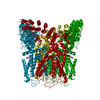 6d7oC 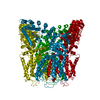 6d7pC 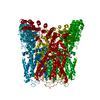 6d7qC  6d7tC 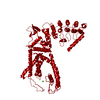 6d7vC 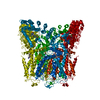 6d7xC M: atomic model generated by this map C: citing same article ( |
|---|---|
| Similar structure data |
- Links
Links
| EMDB pages |  EMDB (EBI/PDBe) / EMDB (EBI/PDBe) /  EMDataResource EMDataResource |
|---|---|
| Related items in Molecule of the Month |
- Map
Map
| File |  Download / File: emd_7824.map.gz / Format: CCP4 / Size: 32.4 MB / Type: IMAGE STORED AS FLOATING POINT NUMBER (4 BYTES) Download / File: emd_7824.map.gz / Format: CCP4 / Size: 32.4 MB / Type: IMAGE STORED AS FLOATING POINT NUMBER (4 BYTES) | ||||||||||||||||||||||||||||||||||||||||||||||||||||||||||||
|---|---|---|---|---|---|---|---|---|---|---|---|---|---|---|---|---|---|---|---|---|---|---|---|---|---|---|---|---|---|---|---|---|---|---|---|---|---|---|---|---|---|---|---|---|---|---|---|---|---|---|---|---|---|---|---|---|---|---|---|---|---|
| Annotation | primary map | ||||||||||||||||||||||||||||||||||||||||||||||||||||||||||||
| Projections & slices | Image control
Images are generated by Spider. | ||||||||||||||||||||||||||||||||||||||||||||||||||||||||||||
| Voxel size | X=Y=Z: 0.98 Å | ||||||||||||||||||||||||||||||||||||||||||||||||||||||||||||
| Density |
| ||||||||||||||||||||||||||||||||||||||||||||||||||||||||||||
| Symmetry | Space group: 1 | ||||||||||||||||||||||||||||||||||||||||||||||||||||||||||||
| Details | EMDB XML:
CCP4 map header:
| ||||||||||||||||||||||||||||||||||||||||||||||||||||||||||||
-Supplemental data
- Sample components
Sample components
-Entire : TRPV6 in amphipols
| Entire | Name: TRPV6 in amphipols |
|---|---|
| Components |
|
-Supramolecule #1: TRPV6 in amphipols
| Supramolecule | Name: TRPV6 in amphipols / type: complex / ID: 1 / Parent: 0 / Macromolecule list: all |
|---|---|
| Source (natural) | Organism:  Homo sapiens (human) Homo sapiens (human) |
-Macromolecule #1: Transient receptor potential cation channel subfamily V member 6
| Macromolecule | Name: Transient receptor potential cation channel subfamily V member 6 type: protein_or_peptide / ID: 1 / Number of copies: 4 / Enantiomer: LEVO |
|---|---|
| Source (natural) | Organism:  Homo sapiens (human) Homo sapiens (human) |
| Molecular weight | Theoretical: 85.076859 KDa |
| Recombinant expression | Organism:  Homo sapiens (human) Homo sapiens (human) |
| Sequence | String: MGLSLPKEKG LILCLWSKFC RWFQRRESWA QSRDEQNLLQ QKRIWESPLL LAAKDNDVQA LNKLLKYEDC KVHQRGAMGE TALHIAALY DNLEAAMVLM EAAPELVFEP MTSELYEGQT ALHIAVVNQN MNLVRALLAR RASVSARATG TAFRRSPCNL I YFGEHPLS ...String: MGLSLPKEKG LILCLWSKFC RWFQRRESWA QSRDEQNLLQ QKRIWESPLL LAAKDNDVQA LNKLLKYEDC KVHQRGAMGE TALHIAALY DNLEAAMVLM EAAPELVFEP MTSELYEGQT ALHIAVVNQN MNLVRALLAR RASVSARATG TAFRRSPCNL I YFGEHPLS FAACVNSEEI VRLLIEHGAD IRAQDSLGNT VLHILILQPN KTFACQMYNL LLSYDRHGDH LQPLDLVPNH QG LTPFKLA GVEGNTVMFQ HLMQKRKHTQ WTYGPLTSTL YDLTEIDSSG DEQSLLELII TTKKREARQI LDQTPVKELV SLK WKRYGR PYFCMLGAIY LLYIICFTMC CIYRPLKPRT NNRTSPRDNT LLQQKLLQEA YMTPKDDIRL VGELVTVIGA IIIL LVEVP DIFRMGVTRF FGQTILGGPF HVLIITYAFM VLVTMVMRLI SASGEVVPMS FALVLGWCNV MAFARGFQML GPFTI MIQK MIFGDLMRFC WLMAVVILGF ASAFYIIFQT EDPEELGHFY DYPMALFSTF ELFLTIIDGP ANYNVDLPFM YSITYA AFA IIATLLMLNL LIAMMGDTHW RVAHERDELW RAQIVATTVM LERKLPRCLW PRSGICGREY GLGDRWFLRV EDRQDLN RQ RIQRYAQAFH TRGSEDLDKD SVEKLELGCP FSPHLSLPMP SVSRSTSRSS ANWERLRQGT LRRDLRGIIN RGLEDGES W EYQILVPRGS AAAWSHPQFE K UniProtKB: Transient receptor potential cation channel subfamily V member 6 |
-Experimental details
-Structure determination
| Method | cryo EM |
|---|---|
 Processing Processing | single particle reconstruction |
| Aggregation state | particle |
- Sample preparation
Sample preparation
| Concentration | 0.5 mg/mL | |||||||||
|---|---|---|---|---|---|---|---|---|---|---|
| Buffer | pH: 8 Component:
| |||||||||
| Grid | Material: GOLD / Support film - Material: CARBON / Support film - topology: HOLEY / Pretreatment - Type: GLOW DISCHARGE / Pretreatment - Time: 25 sec. | |||||||||
| Vitrification | Cryogen name: ETHANE / Chamber humidity: 100 % / Chamber temperature: 277 K |
- Electron microscopy
Electron microscopy
| Microscope | FEI TECNAI F30 |
|---|---|
| Image recording | Film or detector model: GATAN K2 SUMMIT (4k x 4k) / Average electron dose: 67.0 e/Å2 |
| Electron beam | Acceleration voltage: 300 kV / Electron source:  FIELD EMISSION GUN FIELD EMISSION GUN |
| Electron optics | Illumination mode: SPOT SCAN / Imaging mode: BRIGHT FIELD |
| Experimental equipment |  Model: Tecnai F30 / Image courtesy: FEI Company |
 Movie
Movie Controller
Controller



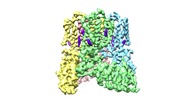



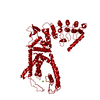

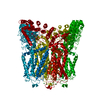


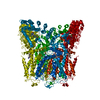


 Z (Sec.)
Z (Sec.) Y (Row.)
Y (Row.) X (Col.)
X (Col.)






















